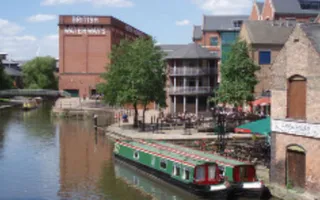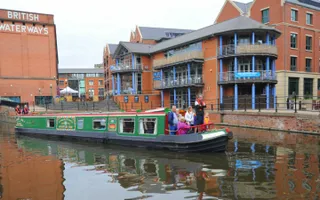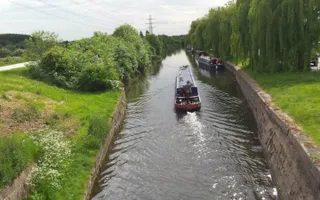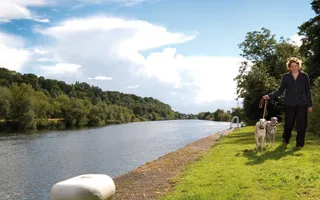The Nottingham & Beeston Canal takes you into the heart of the city, and is a key feature of the vibrant waterfront district.
Nottingham's Castle Wharf area is buzzing with bars, nightlife and alfresco dining, all at the water's edge. It is overlooked by Nottingham Castle, perched dramatically on a high rock above the city.
The surviving canal was once part of a much longer route, which is now derelict. The present-day stretch remains a vital link for boaters, allowing them to bypass an unnavigable section of the River Trent.
Days out in Nottingham by the canal
From city centre shops, bars and theatres to a relaxing walk to the famous Trent Bridge, discover more about Nottingham's waterways.
The history of the Beeston and Nottingham canals
The coalfields of Nottinghamshire brought great wealth to the region, but transport by the local roads was slow and expensive. As Canal Mania swept the country in the 1790s, the citizens of Nottingham resolved not to miss out, and planned a new waterway from the city to Langley Mill. There, it would connect with the Cromford Canal, which was already busy with coal traffic.
The canal was surveyed by William Jessop and James Green. It opened in 1796, 15 miles long with 20 locks - most of which were grouped into a flight at Wollaton.
The geography of the waterways in central Nottingham was, and is, complex. The city was built on the River Trent, but river navigation immediately upstream of the city had always been difficult. While the Nottingham Canal was being constructed, the Trent Navigation Company built an artificial canal - the Beeston Cut - to bypass the river from Trent Lock to Lenton. There, it met with the Nottingham Canal, which therefore became part of the river through-route. Two hundred years later, this is the only part of the Nottingham Canal to survive.
Where the Beeston Cut met the Nottingham Canal, the canal company installed a chain across the navigation, preventing boats from passing without paying the toll. The junction is still known as Lenton Chain today.
A grisly episode in the canal's history occurred in 1818. The canal was often used to ship gunpowder to the mines of Derbyshire and Nottinghamshire - offering a tempting prank for the more mischievious boatmen. One of them dropped a hot coal onto a small piece of gunpowder, expecting a minor flash. In fact, the damage extended over several nearby streets, killing ten people and destroying the canal company warehouse.
The canal between Lenton and Langley Mill was abandoned in 1937, and filled in after the war. Barely 100 yards survive at the northern end of the canal - the junction with the Cromford and the Erewash - and there are few other traces left. However, the central Nottingham section is as busy as ever with leisure traffic along the Trent.











